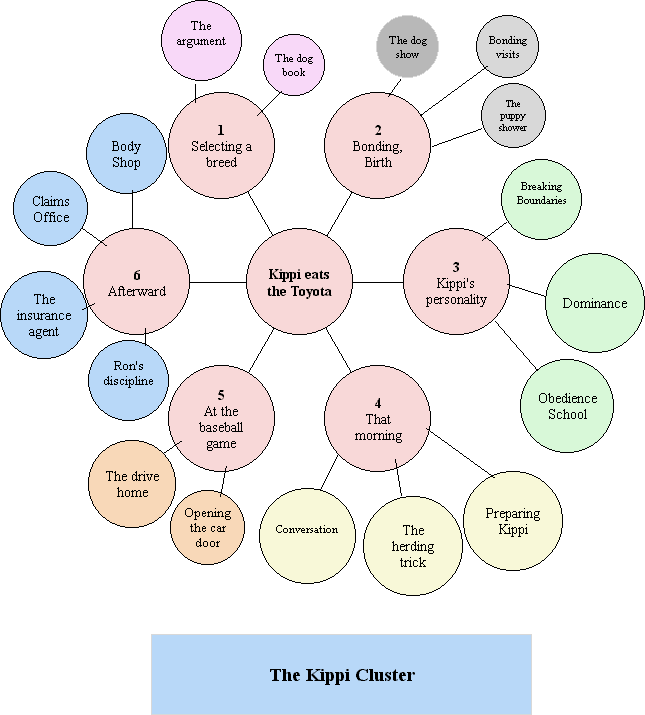Dr.
Kristi Siegel
Mount
Mary College
2900
North Menomonee River Parkway
Milwaukee,
WI 53222
siegelkr@mtmary.edu

Pre-Writing ...
Using a Cluster Diagram for
Prewriting and Organizing an Essay (The Kippi Example)
Note: To read the narrative about Kippi click here
first: narrative
|
-
The
cluster diagram below is presented as an example of one type of
pre-writing. Pre-writing (writing and thinking about a paper
before writing it) fills your "well" and creates
learning. Every time you skip the pre-writing process, you
miss an opportunity to create a richer paper. Even people
who state that they dashed off a paper in a few minutes often have
been thinking about the paper for some time. For example, I
do a lot of "mental" pre-writing in my car, which
explains why I am such a bad driver. Even with a fair amount
of pre-writing, do not think of pre-writing as merely an initial
process. Often, during writing, you will need to go back and
fill the well several times.
|
- There are many different pre-writing
techniques. Some of the most common are listed below:
- Brainstorming (jotting down one idea after another)
- Freewriting (writing quickly about the general topic; the
idea is to keep writing rather than focusing on correctness or
sense). One method of freewriting that works well for
the overly conscientious sort is to turn off your computer
monitor so that you are unable to see your errors.
- Using a journal (keeping a journal as a source of
ideas"
- Reading (without resorting to "theft," reading the
ideas of others can often generate your own ideas)
- Outlining (listing and organizing your ideas; a technique
that works best when some "pre-thinking" has already
taken place
- Using prompts (sets of questions that help you think about
your topic from different angles)
|
-
One
pre-writing technique that is especially helpful for visual
learners is called clustering. In a cluster diagram
the central events or components of an essay are presented
visually; more detailed events branch off the main events to
provide a visual overview of the entire narrative or report.
Although in this example the main events are numbered
chronologically, it isn't necessary to do so and may, in fact,
hamper the writer's ability to re-order these events to
"fit" the thesis or to present the material more
dramatically.
|
The
Cluster Example:

CXC
Homepage
Online College Comp. Class Schedule (Information
Central)
|